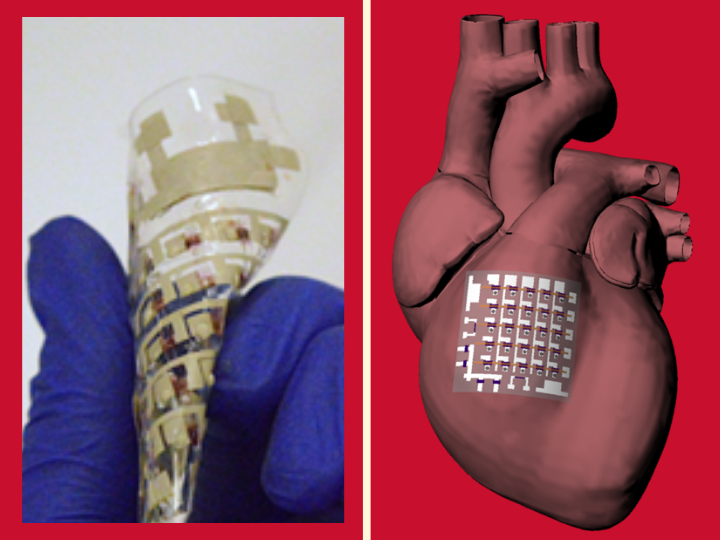Nov 4 2020
Arrhythmias and other heart problems are monitored and treated using pacemakers and other implantable cardiac devices. In general, such devices tend to lead to one of two drawbacks.
 Cunjiang Yu, Bill D. Cook Associate Professor of Mechanical Engineering at UH, led a group of researchers that developed a cardiac patch made from fully rubbery electronics that can be placed directly on the heart to collect electrophysiological activity, temperature, heartbeat, and other indicators, all at the same time.
Cunjiang Yu, Bill D. Cook Associate Professor of Mechanical Engineering at UH, led a group of researchers that developed a cardiac patch made from fully rubbery electronics that can be placed directly on the heart to collect electrophysiological activity, temperature, heartbeat, and other indicators, all at the same time.
Firstly, they are made of rigid materials without the ability to move and accommodate a beating heart; secondly, they are developed using soft materials that can gather only some amount of information.
Led by a mechanical engineer from the University of Houston, a team of researchers has described a patch made of completely rubbery electronics in Nature Electronics. The newly developed patch can be placed directly on the heart to monitor temperature, electrophysiological activity, heartbeat, and other indicators, all simultaneously.
According to Cunjiang Yu, Bill D. Cook Associate Professor of Mechanical Engineering at UH and corresponding author of the study, the device is the first one to incorporate bioelectronics developed based on completely rubbery electronic materials compatible with heart tissue. This feature enables the device to overcome the drawbacks of cardiac implants designed earlier, which are chiefly made of rigid electronic materials.
For people who have heart arrhythmia or a heart attack, you need to quickly identify the problem. This device can do that.
Cunjiang Yu, Bill D. Cook Associate Professor of Mechanical Engineering, University of Houston
Yu is also a principal investigator with the Texas Center for Superconductivity at UH.
The device not only has the potential to collect information from multiple locations on the heart at the same time—a property called spatiotemporal mapping. It can also harness energy from the beating heart, enabling it to function without the need for an external power source.
This enables the device to not only track data for monitoring and diagnostics but to also provide therapeutic benefits such as electrical pacing and thermal ablation, noted the researchers.
Yu is a pioneer in developing completely rubbery electronics with sensing and other biological capabilities, such as for use in skins, robotic hands, and other devices.
The epicardial bioelectronics patch has been developed using a material that exhibits mechanical properties similar to the cardiac tissue, enabling a closer interface and minimizing the risk of damage to the heart muscle by the implant.
Unlike bioelectronics primarily based on rigid materials with mechanical structures that are stretchable on the macroscopic level, constructing bioelectronics out of materials with moduli matching those of the biological tissues suggests a promising route towards next-generational bioelectronics and biosensors that do not have a hard-soft interface for the heart and other organs.
Study Researchers, University of Houston
“Our rubbery epicardial patch is capable of multiplexed ECG mapping, strain and temperature sensing, electrical pacing, thermal ablation and energy harvesting functions,” added the researchers.
Apart from Yu, researchers from UH, the Texas Heart Institute, and the University of Chicago contributed to the study. The team includes first authors Kyoseung Sim, Faheem Ershad, and Yongcao Zhang, all from UH; Pinyi Yang, Hyunseok Shim, Zhoulyu Rao, Yuntao Lu, and Anish Thukral, all from UH; Abdelmotagaly Elgalad, Yutao Xi, and Doris A. Taylor from the Texas Heart Institute; and Bozhi Tian from the University of Chicago.
Sim, a former member of the Yu group, is now an assistant professor at the Ulsan National Institute of Science and Technology in Ulsan, Korea.
Source: https://www.uh.edu/